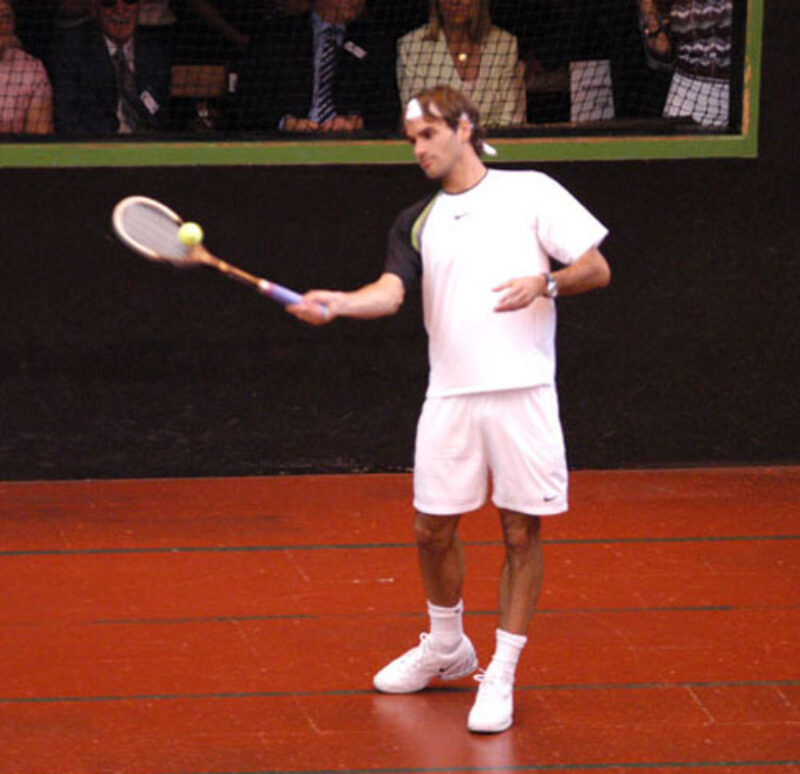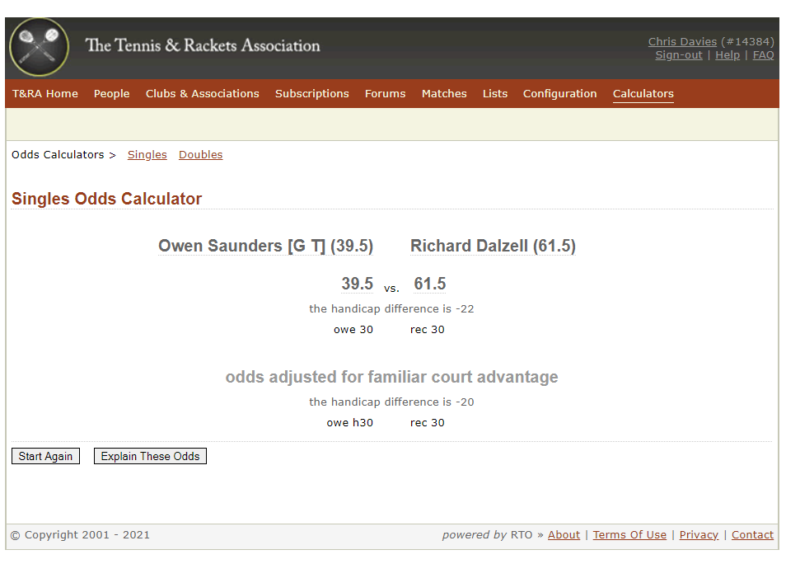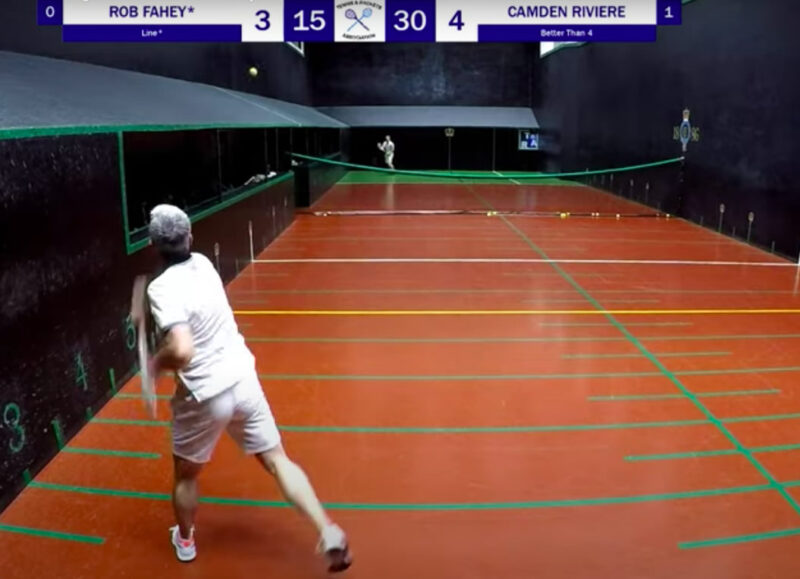The Handicap System
Who Can Play Real Tennis?
Well with the Real Tennis Handicap System anyone can play.

Imagine if a club tennis player could have a close game against Roger Federer. Or if a weekend badminton player could give an Olympic medallist a run for their money….
Well, in Real Tennis this can happen!
One of the great things about Real Tennis is the handicap system. This enables players of different abilities to play each other and still have a close game. This is the great part of the game and increases inclusivity within Real Tennis.
How does it work?
Handicapping uses five ways to help level the playing field:
- Points advantage: the weaker player might start some games with points already on the board, and the better player might start some games at ‘minus points’. For example, each game could start at “Plus 30: Minus 30” rather than the usual “Love all” we’re all used to.
- One serve: the better player might not be allowed a second serve. So a fault is the same as a double fault and loses the point. This means the better player can’t afford to play aggressive, risky serves.
- Preventing the better player from hitting some parts of the court because that shot is considered too good.
- Penalising the better player if they hit a shot that is not accurate enough for someone of their ability.
- Home and away: all real tennis courts are slightly different in size and playing characteristics, such as bounciness. A player might be given extra handicap points if they have not played on the court very often.
What sort of handicaps are played?

The smallest difference is when players are only 1 handicap point apart.
When this happens, the only difference to a normal game is that the better player starts the 4th game of every set at “minus 15”, so has to win a point in order to get back to love.
The biggest points difference happens when players are 25 points apart. Then every game starts at a score of “30 owe 40”. So, the weaker players needs 2 points to win a game and the better players needs 7 points.
After that the other handicaps come in…. The biggest one possible, when players are 50 points apart, means every game starts at “30 owe 40”, AND the better player is not allowed a second serve, AND cannot hit some parts of the court AND must hit shots that are good enough or else they lose the point.
If players are more than 50 points apart they still have to play off a difference of 50. Otherwise it would start to not look like a proper game of tennis at all.
What happens after the match?

The amount by which a player’s handicap moves will depend not only on whether they win or lose but also by what margin; it also depends on how important the match is – friendly or competition.
After every match, the result is entered into realtennisonline.com, the international handicap system; the change in both players handicap will reflect the result of the match.
The handicap system works for both singles and doubles, and also copes for games which are played level.
Each player’s handicap, singles and doubles, is available online for everyone to see.
Example of effect of match on change in handicap
- Result of fictitious friendly match between Owen Saunders (Owe 30) and Richard Dalzell (Receive 30)
- Owen wins by 6/4, 6/2
- Owen won 12 games and 2 sets.
- Richard won 6 games and no sets.
- As a result, Owen's handicap reduces by 0.2 and Richard's handicap increases by 0.2
What Next?
Come and have a go. Maybe you’ll get to play the World Champion and have a chance to beat them!